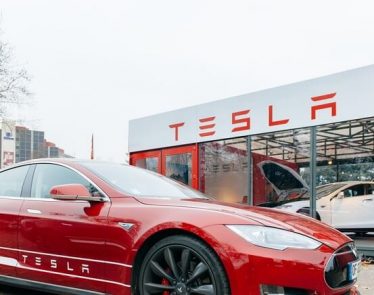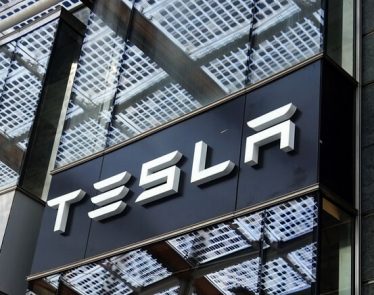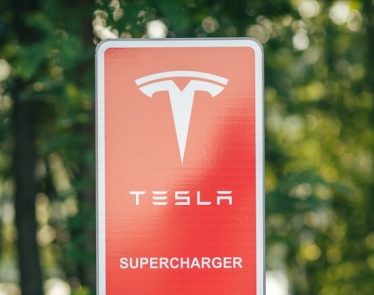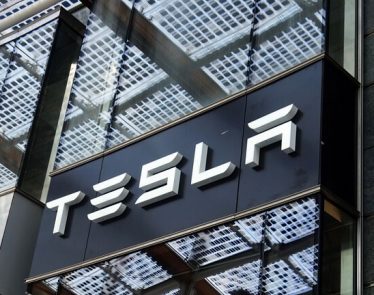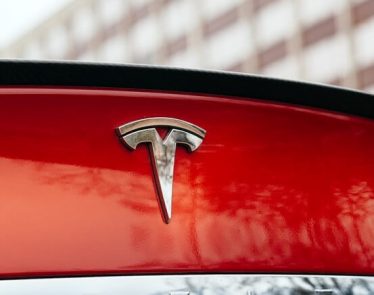
Summary:
- Tesla stock prices have jumped in excess of 160% from 2014, reflecting the 400% increase in sales during the same period.
- Without any noticeable signs of correction, Tesla’s stock has continuously soared, suspended by the belief that the company is years ahead in its innovations.
- In the long-term, investing in Tesla is essentially investing in Elon Musk and his vision.
Led by Elon Musk, one of the most prominent figures in the world, Tesla (NASDAQ:$TSLA) has quickly become one of the most covered companies in the stock market. Entering the market with their all electric, flagship Model S, Tesla has revolutionized and pushed the limits of the automobile industry.
The events that surround this stock, and the growth that it’s experienced in the past few years is quite extraordinary. With sales growth of over 400% in the past 4 years, Tesla’s share value also skyrocketed by over 161% in the same period.
Despite this immense sales growth however, Tesla has still been unable to turn over a profit. Additionally, although Tesla’s revenue grew rapidly upon the announcement of the Tesla Model 3 in 2016, the company is still expected to post losses for the next 5 years. As the automobile industry requires heavy capital investments, the company had to continue increasing its share count by about 35% in order to have the necessary financing for its projects.
Although historical and future profitability are core issues, Tesla shares have continued to rally, only recently showing signs of any slowdowns. With concerns associated with the launch of the Model 3, lackluster car sales reports, and looming competitors, a market correction on Tesla’s stock is well overdue.
What is Tesla’s current strategy?
As mentioned in their H1/2017 report, Tesla’s sales numbers came up 3,000 short of their initial 50,000 target, selling just 47,000 cars Year-To-Date in the first 6 months. Although resolved for now, Tesla attributed this miss in sales target to a production lag on its battery packs.
Amidst these issues however, Tesla expects to begin the mass production of the Model 3 by the end of this week, and is expecting production to ramp up to 500,000 by 2018, and over 1,000,000 for 2020.
To consumers, the Model 3 is an $35,000 alternative to the $100,000 price tag of the Tesla Model S, and Model X. Branded as luxury vehicles, the Model S and Model X catered towards an entirely different target market, which is why the launch of the Model 3 is so important. To Tesla, the Model 3 is the company’s entrance into the mass market for electric vehicles, and will determine whether or not their production levels and technology can keep up. With that in mind, Tesla will have to step up in order to avoid and delivery delays, or unexpected costs.
To put into perspective, BMW is an established premium car manufacturer that sells over 2 million cars every year, and operates profitably. Not only has Tesla not turned a profit, and most likely won’t for the next 5 years, but it sells less than 200,000 cars a year. As a result, much of Tesla’s current share value is derived from what the company could potentially do, and not so reflective of its intrinsic value.
On top of burning over $1.5 billion in free cash flow in 2016, which resulted in an $888 million loss, Tesla’s vehicle delivery figures have stagnated over the past 4 quarters:
Q3 2016: 24,500
Q4 2016: 22,200
Q1 2017: 25,000
Q2 2017: 22,000
Although some of this can be attributed to a general trend in the drop of global car deliveries, a good portion is still the result of competitors reacting to the pressure that Tesla has placed on the industry.
With competitors such as Volkswagen (ETR:$VOW3), Daimler (ETR:$DAI), and BMW (ETR:$BMW), Tesla has some fierce competition in the electric vehicle space.
All three of the competitors already have extensive plans in place. Volkswagen has plans to sell 1 million battery driven vehicles by 2025, while manufacturer Daimler is hoping to release a line of 10 new electric vehicle models by 2022 with its $10 billion investment. BMW of course, is close behind Tesla with plans to release a full electric 3 series in the fall of 2017.
In the meantime, Tesla will incur losses on each car they sell, which doesn’t look good for the foreseeable future as production levels drastically ramp up. All in all, Tesla lacks the core engine that any strong business should have: the ability to generate money.
As evidenced by the last 4 quarterly performances, Tesla’s ability to grow and ramp up production is in question. This makes the launch of the Model 3 crucial for Tesla’s operations.
What Investors Should Understand
With negative profits and suspended promises, an investment in Tesla is really an investment in Elon Musk, and the vision he has in store.
As a result, by investing in Tesla, you as an investor are trusting that Elon Musk is able to lead you to the promise land, and possible the only one able to execute it masterfully. By doing so, you are voiding the experience, financial and human resources, and the ability for firms to innovate. Firms which already have significant production infrastructure in place, and have sustainable cash flows from multiple sources of revenue to sustain themselves.
Investors of Tesla believe that their competition won’t be able to catch up, and that their competitive advantage is so deep, that it will last for years to come.
Additionally, you hope that one day Tesla will cease their endless need for financing through the dilution of shares, while Elon Musk will begin to think about profitability and benefitting Tesla’s shareholders rather than throwing everything back into R&D.
Although shorting Tesla in this current market is a very risky move, going long on Tesla is a perfect example of how investors can become over optimistic about promises from influential leaders. As of right now, Tesla’s share value is very difficult to justify given the evidence provided.
Additionally, significant changes and breakthroughs can arise over the next 10 years. Currently, Tesla is only exploring electric vehicles as the future of transportation, however it is yet to be seen if electric batteries are the only alternative to gas that will have a breakthrough in the market. Not only competing with Tesla in the grounds of electric vehicles, various car manufacturers are also researching the viability of hydrogen-powered cars, or viable fuel cells. As Tesla barely has the financial resilience to fund its current research, the company is very exposed to these risks.
Featured Image: twitter




